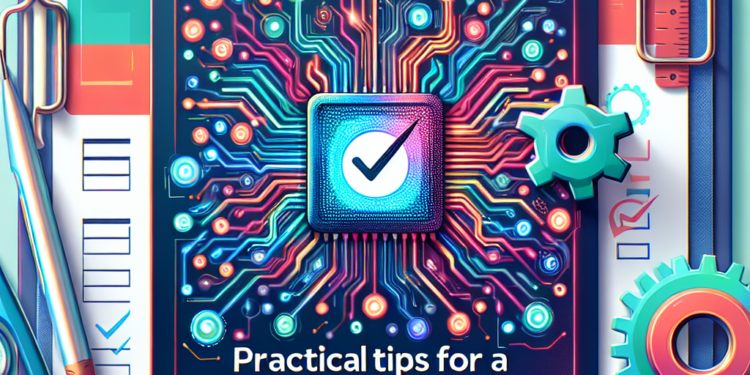Artificial Intelligence (AI) has become an integral part of modern technology, with applications ranging from voice assistants and chatbots to data analysis and predictive modeling. However, even the most powerful AI tools can be ineffective if they are not optimized correctly. In this article, we will discuss some practical tips for optimizing AI tools to ensure they perform at their best.
1. Understand the Problem
The first step in optimizing an AI tool is to clearly define the problem it is trying to solve. This involves understanding the data the tool will be working with, the desired outcome, and any constraints or limitations that may exist. By having a clear understanding of the problem, you can better tailor the AI tool to meet your specific needs.
2. Choose the Right Algorithm
There are many different algorithms that can be used in AI tools, each with its own strengths and weaknesses. It is important to choose the right algorithm for the specific problem you are trying to solve. Consider factors such as the type of data you have, the complexity of the problem, and the desired level of accuracy. Experiment with different algorithms to see which one performs best for your particular use case.
3. Preprocess the Data
Data preprocessing is a crucial step in optimizing AI tools. This involves cleaning and transforming the data so that it is in a format that the algorithm can easily work with. This may include removing missing values, normalizing the data, and encoding categorical variables. By preprocessing the data effectively, you can improve the accuracy and performance of the AI tool.
4. Feature Selection
Feature selection involves choosing the most relevant variables that will be used as inputs to the AI tool. This can help reduce the complexity of the model and improve its performance. Use techniques such as correlation analysis and feature importance to identify the most important features. By selecting the right features, you can optimize the AI tool to focus on the most critical information.
5. Hyperparameter Tuning
Hyperparameters are parameters that are set before training an AI model, such as learning rate, batch size, and number of epochs. Tuning these hyperparameters can significantly impact the performance of the AI tool. Use techniques such as grid search or random search to find the optimal combination of hyperparameters that result in the best performance. By tuning the hyperparameters, you can optimize the AI tool to achieve better results.
6. Cross-Validation
Cross-validation is a technique used to evaluate the performance of an AI model. It involves splitting the data into multiple subsets, training the model on one subset, and testing it on another. By using cross-validation, you can assess the generalization performance of the AI tool and identify any issues such as overfitting. This can help optimize the AI tool to perform well on new data.
7. Regularization
Regularization is a technique used to prevent overfitting in AI models. It involves adding a penalty term to the loss function that penalizes complex models. Regularization helps prevent the model from memorizing the training data and instead focuses on capturing the underlying patterns. Use techniques such as L1 or L2 regularization to optimize the AI tool and improve its generalization performance.
8. Model Evaluation
Model evaluation is an important step in optimizing AI tools. This involves assessing the performance of the model on a separate test dataset to ensure it is accurately predicting outcomes. Use metrics such as accuracy, precision, recall, and F1 score to evaluate the performance of the AI tool. By continuously evaluating the model, you can identify areas for improvement and optimize the AI tool to achieve better results.
9. Monitor Performance
Once an AI tool is deployed, it is important to continuously monitor its performance to ensure it is working as expected. Use tools such as monitoring dashboards and alerts to track key metrics and detect any issues in real-time. By monitoring performance, you can quickly identify and address any issues that may arise, ensuring the AI tool remains optimized and effective.
10. Update and Refine
AI tools are not static and should be updated and refined regularly to maintain their performance. Keep abreast of the latest research and advancements in AI technology, and incorporate new techniques and algorithms into your AI tool. Additionally, collect feedback from users and stakeholders to identify areas for improvement and refine the AI tool accordingly. By continuously updating and refining the AI tool, you can ensure it remains optimized and delivers the best results.
In conclusion, optimizing AI tools is a complex and ongoing process that requires careful consideration and experimentation. By following the practical tips outlined in this article, you can effectively optimize your AI tools to achieve better performance and results. Understanding the problem, choosing the right algorithm, preprocessing the data, and tuning hyperparameters are just a few of the key steps you can take to optimize AI tools. By continuously monitoring performance, evaluating models, and updating and refining the AI tool, you can ensure it remains optimized and delivers the best possible outcomes. By following these tips, you can unlock the full potential of AI tools and drive success in your organization.













